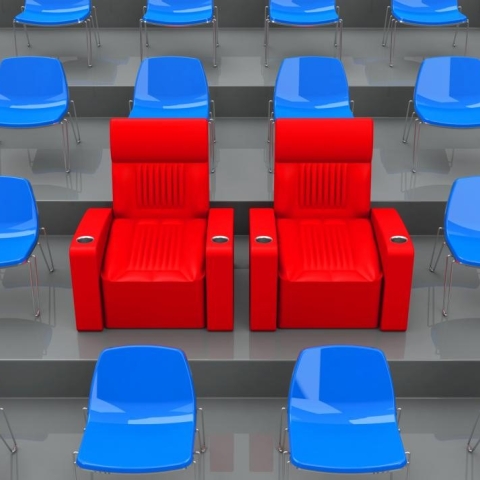Amanda McPhail

Amanda McPhail runs the booking team for IQ SmartCenter, a conference room provider in San Diego. Amanda has longstanding expertise in the event industry and enjoys blogging about the latest trends and industry topics.

Are you planning to organize a conference meeting with VIPs? VIPs are the most important people in your network because they can generate greater sales, help you develop more innovative products, formulate a more powerful marketing campaign or improve your business.
A VIP event — or VIP participation at events — isn’t something that businesses organize every day. So following certain rules and protocols (especially if your guests are from another country, where expectations and codes of conduct may vary) is an easy way to ensure your VIPs receive the treatment they deserve.
VIPs don’t have to be from another company; they can include your chief operating officer, chief technology officers, regional heads and country managers. They are important to your business, so it should be a given that you will make them feel special when they are going out of their way to participate in your event or meeting. Following a VIP protocol is a great way to do this.
It’s best to put your VIP event protocols in writing, so all internal and external collaborators are aware of them and can ensure compliance. These protocols comprise standards and rules related to who enters the conference room first, who guides the VIPs to their designated seats, who accompanies them throughout the event, who welcomes everyone and who should meet the VIPs when they arrive at the meeting. Sometimes these protocols may also outline specific dietary requirements to include in the menu, especially if the VIPs belong to different cultures, or gifts that must be presented at the end of the event.
VIP conferences and meetings involve thorough planning that begins weeks in advance. Let us take a look at some essential protocols that should always be adhered to regardless of who the VIPs are, or the kind of business event that you’re having.

As soon as your VIP guests enter the conference room, they must be welcomed. But they cannot be welcomed by just anyone. Instead, other important people must greet them. So for instance, if you’ve invited the COO of a potential customer, then your CEO, COO or CTO should greet them and accompany them throughout the event. If you’ve invited one of your current clients' sales executives, it is appropriate to have your CMO or production director meet with them.
If your VIPs don’t live in the city where you’re organizing the event, you have to do a lot more in terms of hospitality. Their protocol begins long before they reach the venue. In advance, you should offer to assist with booking flights, hotel rooms, and make arrangements for local transport.
Depending on level and cultural expectations, VIPs may be greeted at the airport or upon arrival at the hotel, by an executive or your head of operations. And you may want to set them up for a meeting with the C-suite before the actual event kicks off.
If your VIP guests are from a different cultural background, you should find out more about their needs. There may be certain greeting protocols that they may be used to and that your team may not be aware of. Cultural differences also need to be taken into account when planning the food. Ideally, all meals should make a dish available that belongs to the culture of your VIPs, so they feel comfortable, while also including some local favorites. Also, if English isn’t the first language of your VIP guests, they may require translators during their stay.
Find out cultural differences in terms of special customs, religious beliefs, dietary requirements and languages. Obviously, if you obtain more information, there are fewer chances of errors, and you can serve the VIP better, earning their trust and satisfaction.

Seating is one of the most important parts of a VIP protocol. If all attendees or key individuals will be sitting around a table, then the most important VIP must sit on the right-hand side of the person who is leading the meeting. Other VIPs should sit on the left side of the host. Designate seats for the VIPs. Needless to say, these seats must be in the center and the first three rows, depending on the number of VIPs guests that you expect at the conference.
VIP protocols also include speaking rules: who will speak and when? Most conferences and meetings begin with the host welcoming all the attendees. Depending on whether it is appropriate for your event, the host should also introduce the VIP guests and welcome each one. Find out beforehand if the VIPs would like to make speeches, in which case, you’ll have to decide when to invite them on stage and modify your agenda accordingly.
Professional photographs are a way to capture and create lasting memories. To ensure everyone is satisfied, you should know beforehand where you want the photos to be taken, and who will stand next to the VIPs. The photographer will not know the group dynamics as well as you do; getting the people together, pointing out the VIPs to the photographer, and creating a proper group with distinguished guests at the front is your duty.
When deciding on an arrangement for the group, keep in mind that only a certain number of people can fit in a photograph. Consider heights as well; shorter individuals may need to be grouped in front. Decide whether the VIPs will be photographed as a group or individually as well. Also, set up different group configurations for a variety of images — you may find use for these photos down the road.
